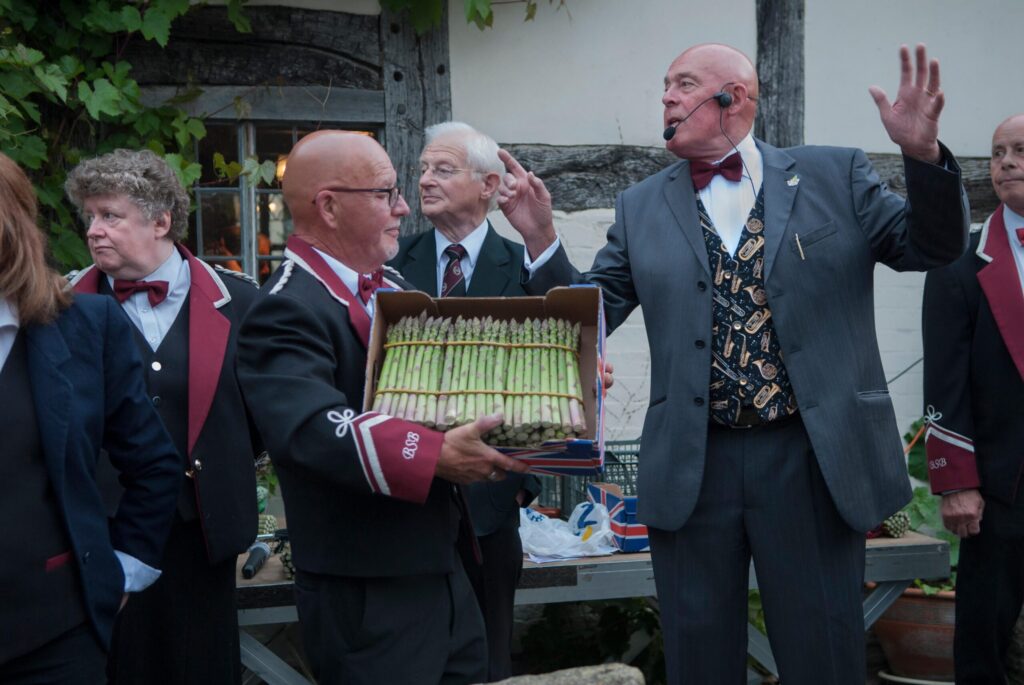Is This the World’s Most Beloved Asparagus?

The Newz Radar
The picturesque village of Bretforton, in Worcestershire, England, has a unique claim to fame. Over 240 acres of land surrounding the village used to be dedicated to asparagus, and today, it is the heart of the yearly Vale of Evesham asparagus celebrations.
Every year in May, the village hosts the British Asparagus Festival with Morris dancing, asparagus songs, demonstrations of traditional asparagus-tying, and guest appearances from Gus the Asparagus Man and Eve, the Asparagus Fairy. Anyone wanting to know what the future holds seeks out Jemima Packington, the world’s only “Asparamancer.” Packington makes her predictions by throwing asparagus spears into the air and interpreting how they fall.
Known locally as “Vale gras” or simply “gras,” Vale of Evesham asparagus is unique. It was even the last British product awarded “Protected” status by the EU, prior to Brexit. So what makes it different than any other asparagus?
The answer lies in the terroir. Unlike the sandy soils found in other asparagus regions, Vale asparagus is grown in heavy clay. In addition, the Vale of Evesham has a warm, dry microclimate. These factors combined result in a slightly sweet asparagus that’s succulent and tender, despite its thicker stem.
It was its uniqueness that led to Vale asparagus gaining protected status, says Darren Hedges from Revills Farm Shop. “All asparagus grown in the Vale of Evesham naturally outdoors now comes under Protected Geographical Indication, because of our microclimate,” he explains. “Any asparagus grown under glass or cover does not have this status.”
Asparagus was first introduced into the UK in the 17th century. In 1667, diarist Samuel Pepys wrote about buying a “hundred of sparrow-grass” at Fenchurch Street in London. By 1768, it was being grown in Evesham and sent for sale in Bath and Bristol.
With the arrival of the train network, Vale of Evesham asparagus was soon transported to London and elsewhere. Although the Second World War led to a decline in the acreage devoted to asparagus, Vale gras is now sought-after once more, especially by top restaurants and hotels.
Asparagus is a crop that requires time and patience. It takes four years to grow to maturity before it’s ready for cutting, and the spears can only be cut for a short season, traditionally between April 23 (St. George’s Day) and June 21 (Midsummer’s Day). After that, it has to be left to grow and gain strength for the next year’s crop. Each asparagus plant can remain viable for 20 years or more.




